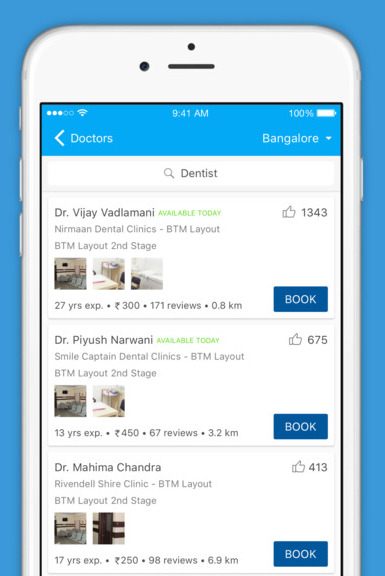 Bangalore, India-based startup Practo, which offers an app and web-based platform for people to access healthcare information and locate doctors, has raised $55 million in Series D funding in a round led by returning investor Tencent. Thrive Capital, Ru-Net, RSI Fund, Sequoia, Matrix, Capital G, Altimeter Capital and Sofina also contributed. This brings Practo’s total funding to date at about $180 million.
Bangalore, India-based startup Practo, which offers an app and web-based platform for people to access healthcare information and locate doctors, has raised $55 million in Series D funding in a round led by returning investor Tencent. Thrive Capital, Ru-Net, RSI Fund, Sequoia, Matrix, Capital G, Altimeter Capital and Sofina also contributed. This brings Practo’s total funding to date at about $180 million.
Practo, which was founded in 2008, aims to improve access to medical care and information in emerging markets, where finding doctors can be difficult, and also offers enterprise business intelligence and analytics to enterprise partners. For consumers, it connects them to healthcare providers, clinics and hospitals around the world, and the company has 200,000 practitioners, 10,000 hospitals and 5,000 diagnostics centers available on the platform. This offering is active in India, Indonesia, the Phillipines, Singapore and Brazil, and the latest funding round will be used to expand further internationally.
“I’m happy to share that we’re taking the next significant step in our march towards simplifying healthcare and building a singular destination for all healthcare needs,” Practo CEO Shashank ND wrote on the company’s blog. “Over the past year, Practo has seen 90 percent growth in patients, 80 percent more appointments booked, eight times more reviews from users and more than 5 million health records shared on the platform.”
The company also has a business-to-business focus, selling a SaaS practice management software to healthcare centers to help them digitize their practice. Last year, Practo acquired analytics company Enlightiks to power its integrated platform and build out their enterprise services.
“2017 will be the year our integrated healthcare platform comes to life and we will partner with various service providers to build solutions with Practo,” ND wrote. “This will be made possible by providing a central infrastructure on which the entire healthcare ecosystem can interact, connect, create and exchange value by linking layers of data, communication and payments to deliver better care.”


















